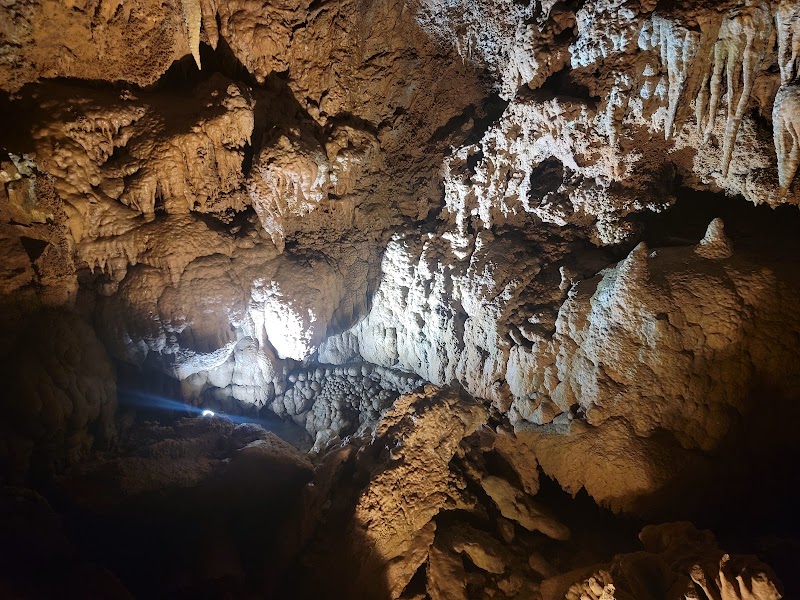
Chasing the Constant Flow: A Practical Guide to Burney Falls in Burney, California
Burney Falls boasts an unyielding flow of crystal-clear water, creating a visually stunning and serene environment year-round. This guide walks you through the easy-to-access trails and practical tips to help you plan your visit confidently and get the most from your adventure.
Wear waterproof, sturdy shoes
The trail to Burney Falls is well-maintained but can be slippery near the lookout and creek; shoes with good grip are highly recommended.
Bring enough water
Even short hikes near the falls can dehydrate you quickly, especially in summer months. Carry at least 1 liter per person.
Visit during off-peak hours
Parking and trailhead crowds surge midday and on weekends, so early morning or late afternoon visits enhance both experience and photo opportunities.
Stay on marked trails
To protect fragile ecosystems and for your own safety, avoid venturing off paths, especially near slippery rocks around the falls.
Chasing the Constant Flow: A Practical Guide to Burney Falls in Burney, California
Burney Falls commands attention with a relentless curtain of water daring the earth beneath to resist its steady assault. Located in McArthur-Burney Falls Memorial State Park, this 129-foot cascade defies drought and seasons alike, supplying a ceaseless show of power and calm. Approaching the falls means stepping into a realm where water carves rock with steady insistence, ferns cloak mossy banks in shades of green, and the surrounding forest hums with life. The main viewpoint is an easy half-mile walk from the parking area, offering a mostly flat, well-maintained trail through mixed pine and fir woods. Along this route, the path invites hikers to listen to the cool rush ahead, drawing them closer to the waterfall’s hypnotic roar.
The terrain is accessible but requires sturdy shoes for occasional wet spots and uneven ground. Elevation gain is minimal—around 150 feet—making this trail approachable for most visitors, from families to more seasoned explorers looking for a quick natural refresher. Arrive early or late in the day to find the light filtering through the spray, revealing rainbows that hang like flickering promises within the mist.
Beyond the falls themselves, the trail system offers loops that meander along the Burney Creek, its currents pushing steadily downstream as if guiding you deeper into the forest’s embrace. Seasonal shifts bring subtle changes: spring widens the flow with snowmelt swelling the creek, summer offers the chance to dip toes in refreshing pools, fall frames the falls in fiery leaves, and winter quiets the landscape under soft snow, transforming the scene into a serene lacework of ice.
For practical planning, bring plenty of water—the mountain air can dry you out quicker than expected. Good grip on your footwear will keep you steady on wet surfaces, especially near the lookout and creekside. The parking lot fills quickly on weekends in summer, so consider weekday visits or off-hours to enjoy solitude. Facilities include restrooms and picnic spots, perfect for a relaxed day out.
Burney Falls is a force, fiercely itself, reminding visitors that nature’s beauty often demands respect in exchange for awe. It’s an invitation to witness persistence made visible through water’s timeless journey. Prepare smartly, tread carefully, and let that constant flow pull you into one of California’s most unforgettable water encounters.
Nearby Trips
All Adventures
Boat Charters
Water Activities
Adventures near Redding, California
Discover the unique and memorable adventures that make Redding, California special.
Frequently Asked Questions
How long is the hike to Burney Falls?
The hike from the main parking area to the primary viewpoint is about 0.5 miles round-trip, with an elevation gain of roughly 150 feet, making it accessible for nearly all visitors.
Is swimming allowed near Burney Falls?
Swimming is not permitted at the base of the falls due to strong currents and cold temperatures, but there are designated swimming areas downstream in Burney Creek where it is safe.
Are there facilities available at Burney Falls State Park?
Yes, the park offers restrooms, picnic areas, and parking. However, food services are limited, so bringing snacks or a packed lunch is advisable.
What wildlife might I see around Burney Falls?
Visitors can spot a variety of species including black-tailed deer, river otters, osprey, and an assortment of songbirds attracted by the creek ecosystem.
Can I visit Burney Falls year-round?
Yes, the falls maintain a steady flow throughout the year. Each season brings a distinct experience, from snowy winters to lush springs and colorful falls.
Is there an entrance fee for Burney Falls?
Yes, California state parks generally charge a small entrance fee, which helps maintain the facilities and preserve the natural environment.
Recommended Gear
Waterproof hiking shoes
Provide traction and protect your feet from wet, uneven surfaces near the falls and creek.
Reusable water bottle
Keeps you hydrated on the trail, especially important in warmer months.
Light rain jacket
To shield you from unexpected drizzles and the mist generated by the falls.
Camera with lens hood
Helps capture the waterfall’s dynamic flow while protecting lenses from spray.
Local Insights
Hidden Gems
- "The Panther Creek Falls trail downstream offers a quieter hike with stunning cascades less visited by tourists."
- "The Lovers Leap viewpoint provides a high perspective on the falls framed by dramatic cliffs."
- "In early spring, watch for blooming fairy slippers orchids in shaded forest areas near the trail."
Wildlife
- "Look for the shy American dipper bird, uniquely adapted to foraging underwater in the swift currents of Burney Creek."
- "River otters are often spotted playing downstream, especially near calmer pools."
History
"The area around Burney Falls was sacred to the Achumawi people, who revered the waterfall’s constant, life-giving flow. The site was later designated a state park in 1926 to preserve its natural beauty."
